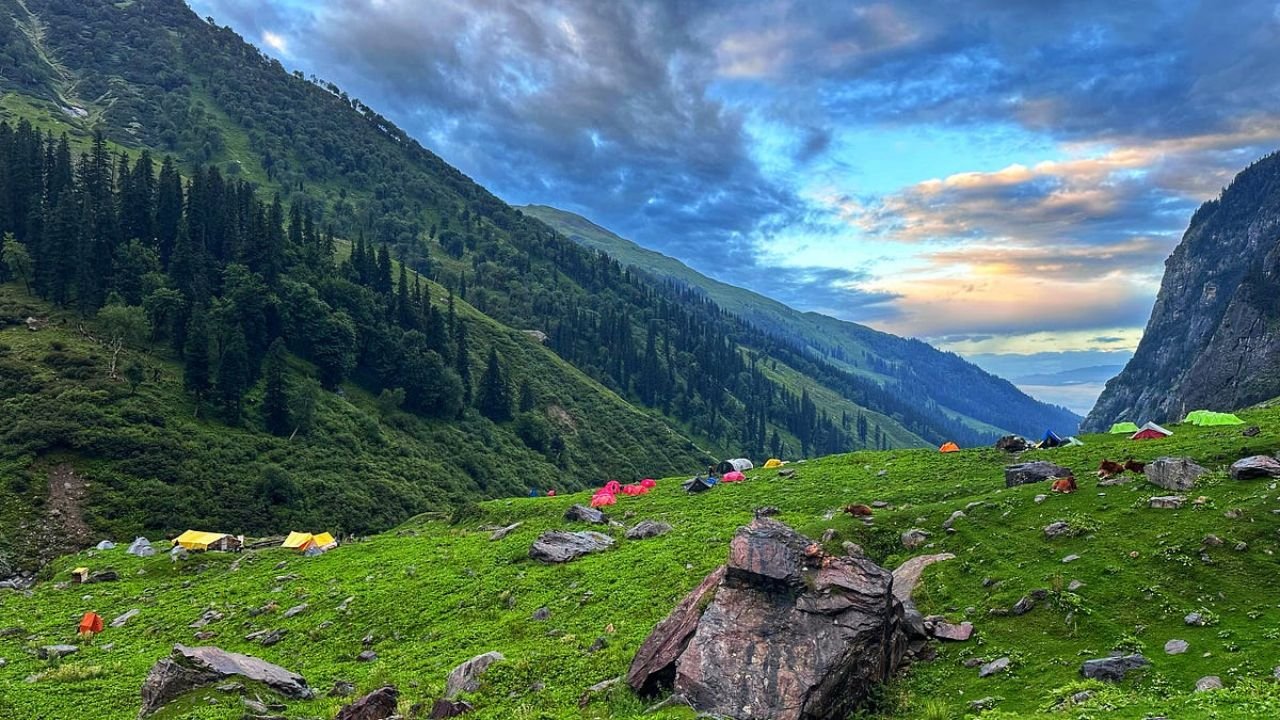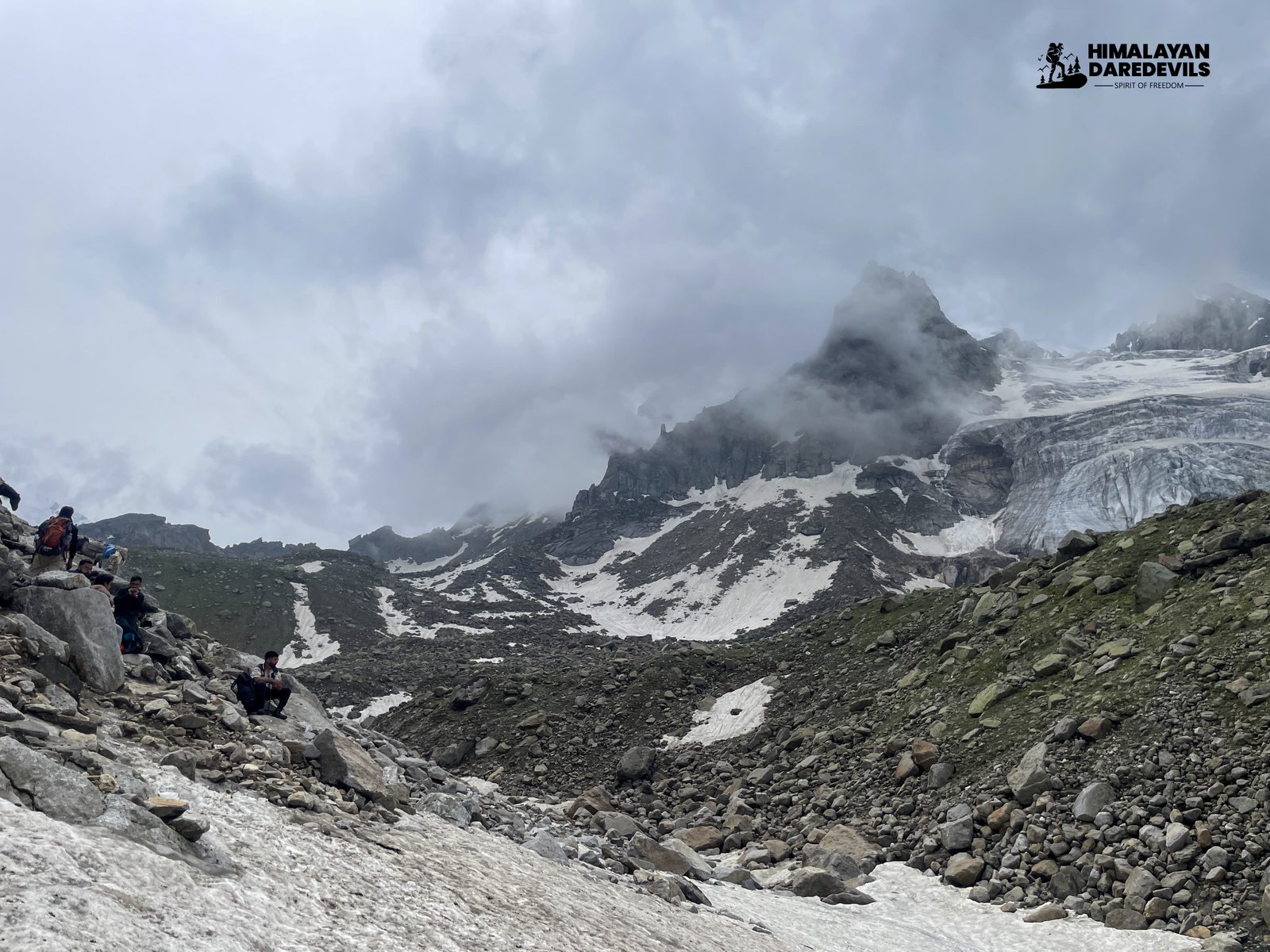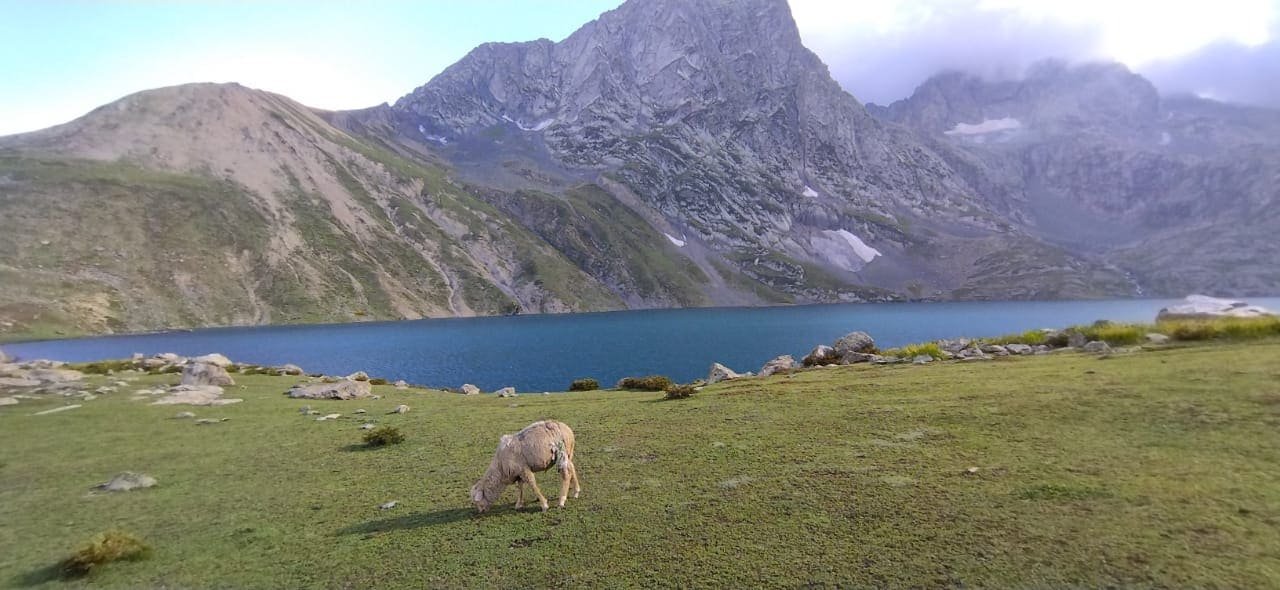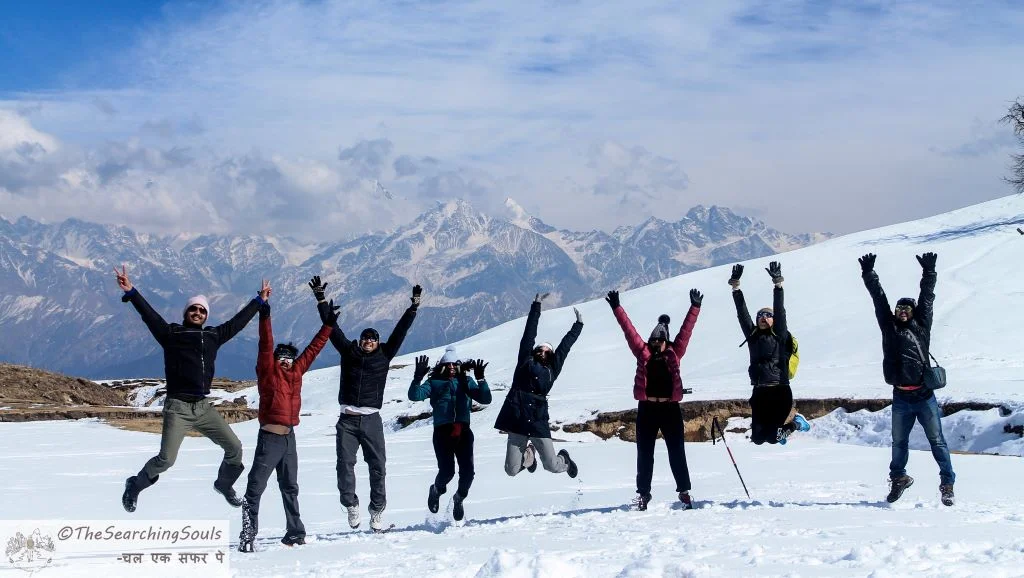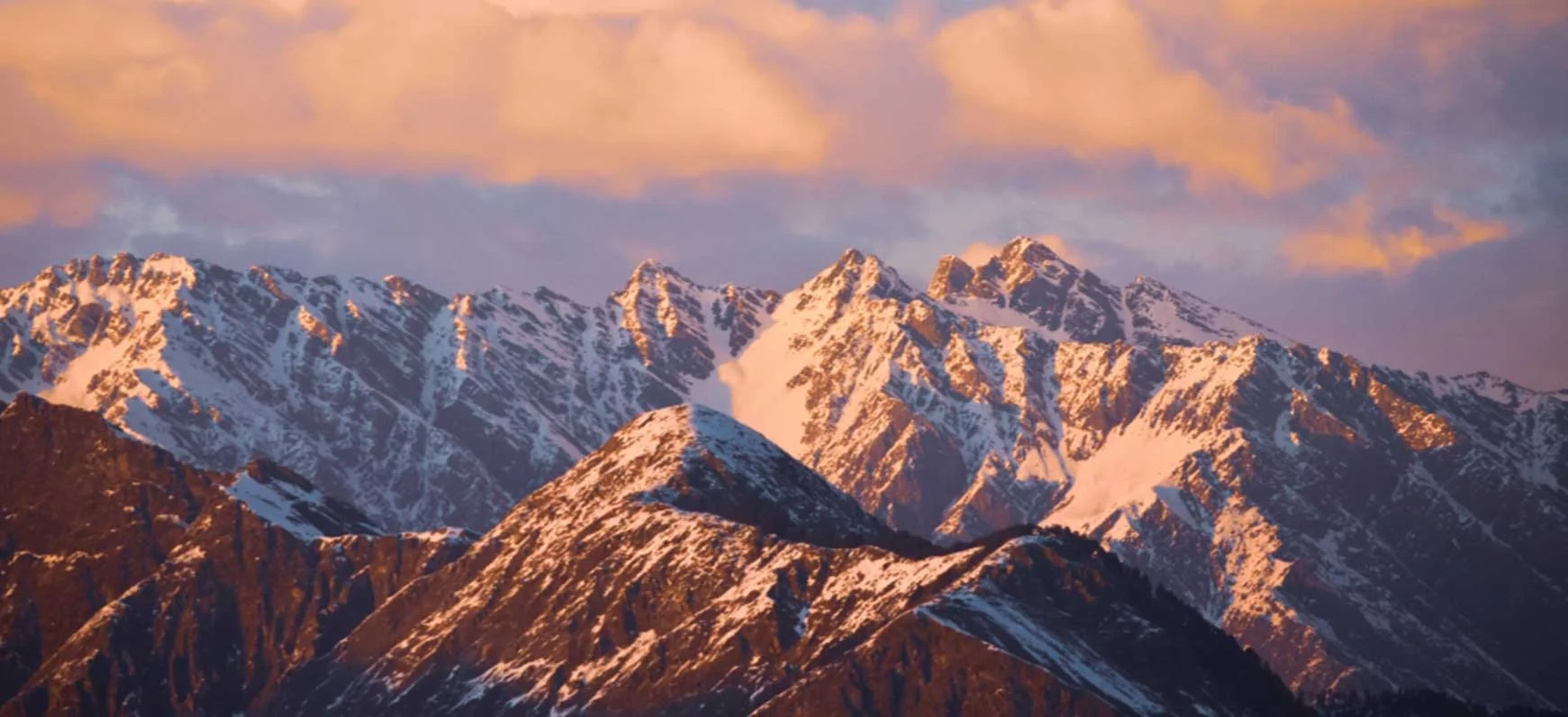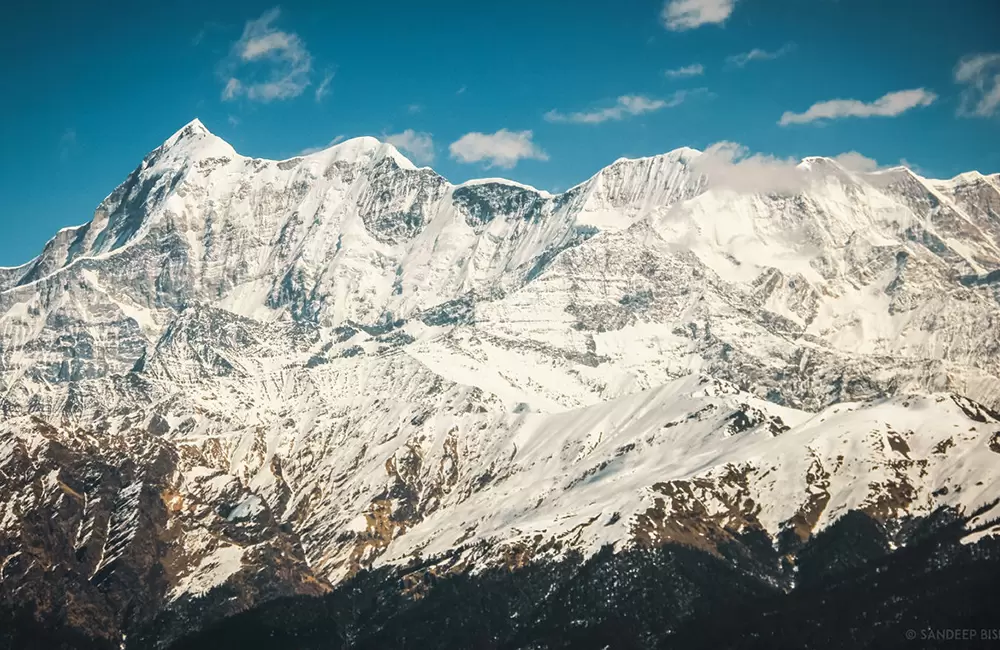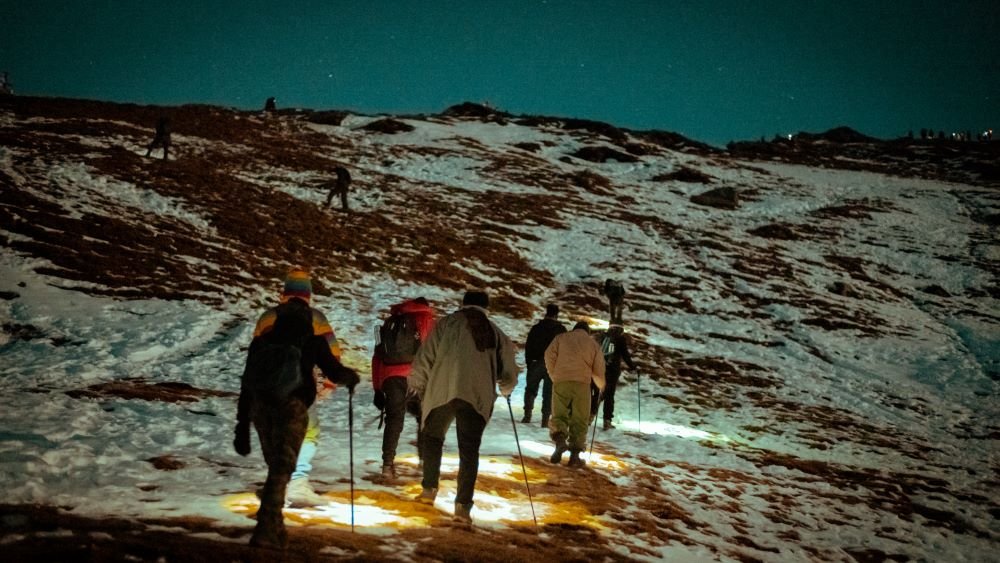20 June 2025
The Hampta Pass Trek is a beautiful opportunity to see the many faces of the Himalayas. Trek to the Hampta Pass starts from the green valley of Kullu and ends at the barren and brown Spiti. The contrast of the thick forests covered in moss and rain to the bare and barren, rocky terrain is enough to stir the soul. To witness this beauty one must be in good physical condition so that fatigue and exhaustion don’t interfere with your experience.
Here we will try to understand the Hampta Pass Trek Fitness requirements and How To Prepare For Hampta Pass Trek.
What Makes the Hampta Pass Trek Physically Demanding?
There are several factors that make the Hampta Pass trek, a trek of moderate difficulty. Knowing these factors and being prepared for them beforehand makes it easy to deal with them:
High Altitude:
The Hampta Pass stands at a height of 14,000 feet from the sea level, at this altitude the world seems different, covered in a white blanket of white clouds the snow capped peaks rise high, their pointy summits ready to poke the blue sky above. The Altitude also brings with itself challenges, at this height oxygen levels drop by about 30–40%, making it harder to breathe and causing quicker fatigue. If your body isn't acclimatized, symptoms like headache, dizziness, and shortness of breath can set in—known as acute mountain sickness (AMS).
Steep Ascents and Long Walking Hours:
The Trekkers on the Hampta Pass Trek will have to walk for 6 to 10 kilometers per day, these walks are not your normal walks, these walks involve steep ascents, balancing on sharp ridges, crossing cold glacial, making your way through loose gravels and even snow patches. This puts a lot of stress on your quads, calves, knees, and ankles and makes it very important to have a Hampta Pass Trek Fitness Plan.
Cold and Unpredictable Weather:
Even in summers the temperature on the Hampta Pass Trek can drop below 0°C especially at night along with this the unpredictable weather makes it very important that you stay prepared for any scenario. The blue skies can quickly cover up with dark black clouds, and rain can make the trail slippery and tough to walk on adding to the fatigue.
How To Prepare for The Hampta Pass Trek?
Now that we have some understanding of the things that make the Hampta Pass Trek challenging, it’s time to know how and what you can do to physically prepare for it.
Here is a detailed table that tells you about some trek specific exercises:
How Early Should You Start Your Trek Fitness Routine?
The best time to start The Hampta Pass Trek Fitness Plan is 8 to 12 weeks before the first day of the trek. An easier
trek requires 4 to 6 weeks of training while a difficult trek requires 12 to 16 weeks of training before finally going on the trek. The Hampta Pass Trek is a moderate trek and starting your training at least 12 weeks before the trek day will give you many benefits.
Common Fitness Mistakes to Avoid Before the Trek
Avoiding these common fitness mistakes can make the difference between an enjoyable trek and a painful one:
Starting Too Late: Waiting until the last 2–3 weeks before the trek leaves little time for real gains. Start training 8–12 weeks in advance.
Skipping Leg and Core Work: Trekking isn’t just about cardio—strong legs and core help with balance, endurance, and pack carrying.
Not Training With a Backpack: Your body needs to adjust to the weight and posture changes of wearing a loaded pack.
Neglecting Recovery: Overtraining without rest can lead to fatigue and injury. Include rest days and active recovery.
Only Training Indoors: Try hiking outdoors with elevation gain to simulate trail conditions and improve terrain adaptability.
Ignoring Flexibility & Mobility: Tight hips, hamstrings, and calves increase injury risk. Stretch regularly and do mobility work.
Poor Nutrition & Hydration Habits: Training without proper fueling can leave you drained and underprepared for the demands of trekking.
Train smart, not just hard, and your body will thank you
Nutrition & Hydration Tips
Proper Nutrition and Hydration is essential to fuel your body, improve endurance, and aid recovery during treks. Dehydration and improper nutrition intakes cause the body to fatigue easily and can also lead to injuries such as cramps. Here is how you can prepare and maintain your Nutrition and Hydration:
Before the Trek (Training Phase)
Eat Whole Foods: Focus on lean proteins, complex carbs (e.g., oats, brown rice), and healthy fats.
Hydrate Consistently: Drink 2–3 liters of water daily leading up to your trek.
Carb-Load 1–2 Days Before: Increase carb intake slightly to top off energy stores.
During the Trek
Frequent Small Snacks: Eat every 1–2 hours—nuts, dried fruit, jerky, trail mix, or energy bars.
Electrolytes Matter: Use electrolyte tablets or drinks, especially in hot or high-altitude conditions.
Balanced Meals: Aim for a mix of carbs, protein, and fat to stay full and energized.
Hydration Tips
Sip Often: Don’t wait until you're thirsty; aim for small sips every 15–20 minutes.
Monitor Output: Clear urine = well hydrated; dark = drink more.
Water Sources: Carry purification tablets or a filter if refilling on the trail.
Final Week Preparation Before Leaving for Hampta Pass Trek
The final weeks before the trek day should be focussed on getting ready for the trek both mentally and physically.
Lighten The Workload (Tapering)
Reduce the intensity of the workout and focus more on light cardio, brisk walks and stretching or yoga.
Avoid Strength Training or high impact exercises that might put extra pressure on the muscles and cause soreness.
Prioritize mobility, foam rolling, and light yoga to stay flexible.
Extra Attention On Nutrition and Hydration
Eat balanced meals rich in carbs, proteins, and healthy fats.
Stay well-hydrated—aim for 2.5–3 liters of water daily.
Avoid alcohol and processed foods in the last 3–4 days before your departure.
Gear Check & Packing
Break in your trekking shoes—wear them daily if new.
Test your backpack with weight; adjust straps for comfort.Pack essentials: layered clothing, rain gear, headlamp, water bottles, and personal meds.
Mental & Altitude Prep
Read about altitude sickness—learn symptoms like headaches, nausea, and fatigue.
Practice deep breathing and mindful walking—both help with high-altitude adaptation.
Go over the route, itinerary, and emergency protocols
Sleep & Rest
Get 7–9 hours of quality sleep every night.
Avoid last-minute stress—finish packing at least 2 days before departure.
Conclusion
Hampta Pass Trek is a delight to nature lovers who want to see the variety of the landscapes that hide in the deep remote Himalayas. The stunning sceneries that you see on the trek are a delight to the mind and the soul. Snow Capped peaks and lush green forests waiting for you in the clean and clear atmosphere of the mountains. To enjoy these things fully without injuries and fatigue, you must follow a well crafted fitness regime, like the one stated above, a balanced mix of cardio, strength training, flexibility exercises, and mental preparation.
With consistent effort and preparation, you'll not only enjoy the breathtaking beauty of the Hampta Pass but also complete the trek safely and confidently. Start early, train smart, and embrace the adventure with a strong body and resilient spirit.
